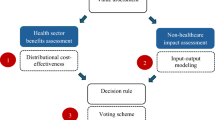Summary
The objective of pharmacotherapy is to restore health or, at least, to limit illness and disability. Drug safety depends upon a strong, reliable chain from the basic science laboratory to the consumer. However, this chain is uneven in strength and the most unpredictable links involve the human factors which contribute substantially to adverse drug reactions. These include misprescribing by physicians, often because of educational deficiencies and sometimes because of the influence of manufacturers’ promotional strategies, as well as noncompliance by consumers.
Similar content being viewed by others
References
Brennan M, Gowdey CW. Adverse drug reactions: a review of fatalities reported in Ontario. Ontario Medical Review, August, 1988
Caranasos GJ, Stewart RB, Cluff LE. Drug-induced illness leading to hospitalisation. Journal of the American Medical Association 6: 713–717, 1974
Carruthers G, Goldberg T, Segal H, Sellers E, Ray WA, et al. Drug utilization: a comprehensive literature review. Ministry of Health of Ontario, Toronto, 1987
Cooper JK, Lover DW, Raffoul PR. International prescription non-adherence (non-compliance) by the elderly. Journal of the American Geriatrics Society 30: 329–333, 1982
Eastman H. Report of the Commission of Inquiry on the pharmaceutical industry. Consumer and Corporate Affairs Canada, Ottawa, 1985
Lexchin Joel. The real pushers: a critical analysis of the Canadian drug industry. New Star Books, British Columbia, 1984
Lowy FH. Prescriptions for health: the report of the Pharmaceutical Inquiry of Ontario, Ministry of Health of Ontario, Toronto, in press
Melmon K. Preventable drug reactions: causes and cures. New England Jounal of Medicine 284: 1361–1368, 1974
Nolan L, O’Malley K. Prescribing for the elderly. Journal of the American Geriatrics Society 36: 245–254, 1988
Ostrom JR. Medication usage in an elderly population. Medical Care 23: 157–164, 1985
Ray WA. The mal-prescribing of liquid tetracycline preparations. American Journal of Public Health 67: 762–763, 1977
Ray WA, Griffin MR, Schaffner W, Baugh DK, Meltan J. Psychotropic drug use and the risk of hip fracture. New England Journal of Medicine 316: 363–369, 1987
Sackett DL, Haynes RB. Is there a patient compliance problem? In Lasagna L (Ed.) Controversies in therapeutics, pp. 552–558, WB Saunders, Toronto, 1980
Soumerai SB, Avorn J. Efficiency and cost containment in hospital pharmacotherapy: state of the art and future directions. Millbank Memorial Fund 62: 447–474, 1984
Soumerai SB, et al. Improving drug prescribing in primary care: a critical analysis of the experimental literature. Millbank Quarterly, in press
Steel K, Gertman PM, Crescenzi C, Anderson J. Iatrogenic illness on a general medical serivce at a university hospital. New England Journal of Medicine 304: 638–642, 1981
Author information
Authors and Affiliations
Rights and permissions
About this article
Cite this article
Lowy, F.H. Realities of Drug Use in Society. Drug-Safety 5 (Suppl 1), 155–159 (1990). https://doi.org/10.2165/00002018-199000051-00024
Published:
Issue Date:
DOI: https://doi.org/10.2165/00002018-199000051-00024




